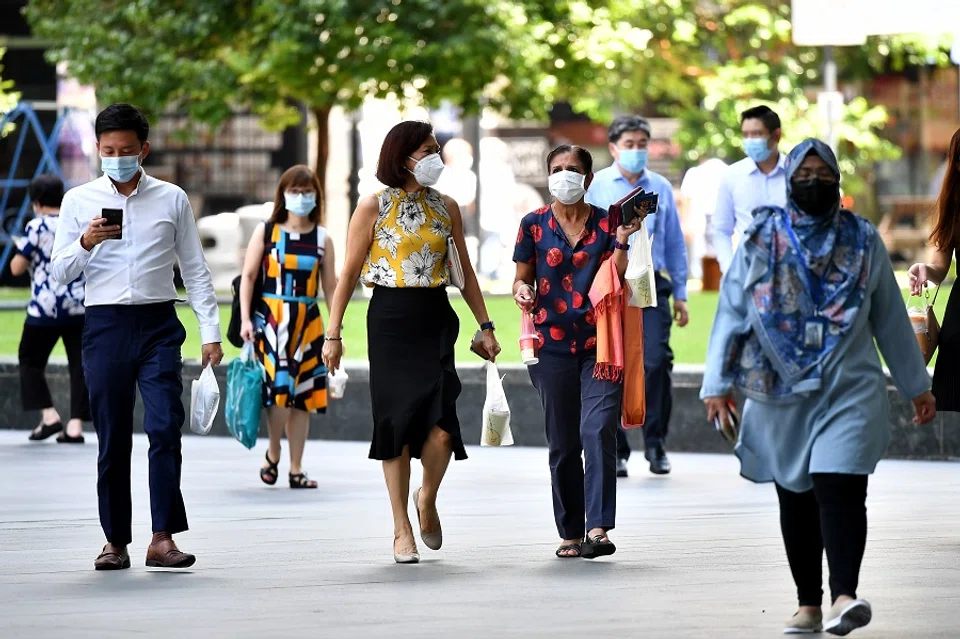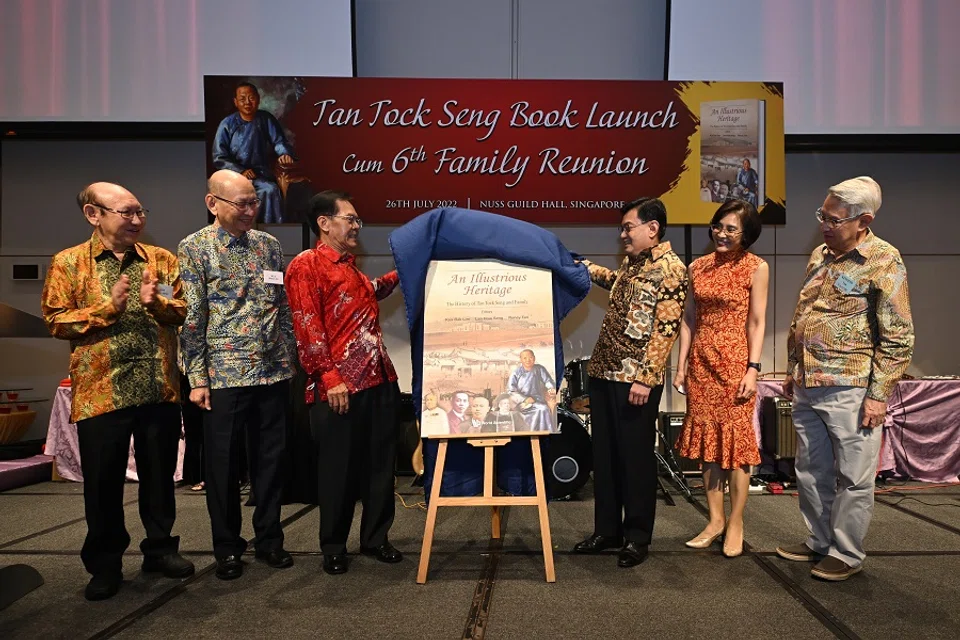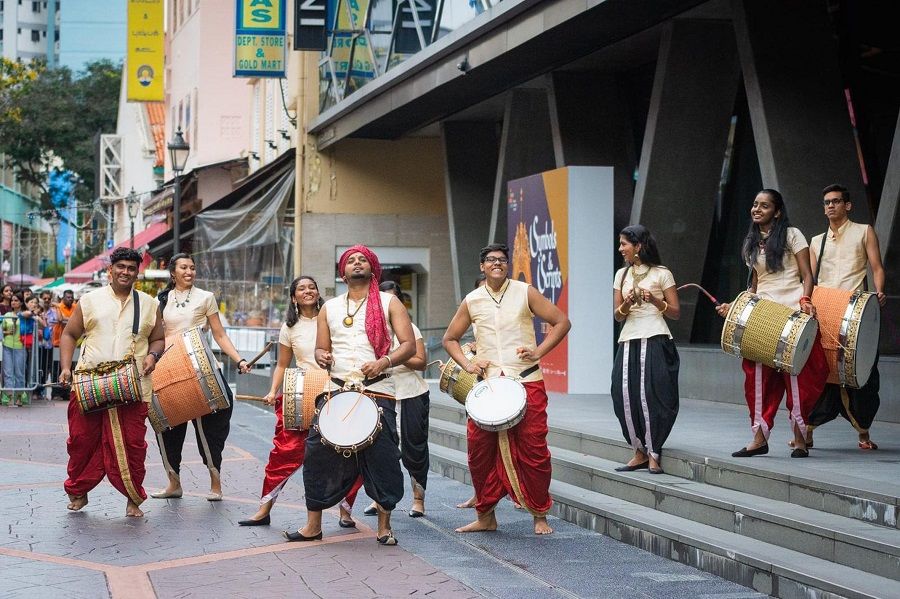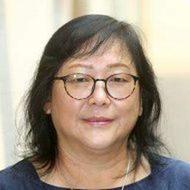What does multiculturalism mean in Singapore?

When I watched local Chinese opera as a child, the main characters would always announce their ancestry along with their full names when they made their first appearance on stage. I always wondered why they had to recite a string of ancient locations that nobody knew. It was only later that I realised that this was the Chinese way of defining someone's identity.
A full picture of one's ancestry
When Roney Tan Kee Lian, fifth-generation descendant of one of Singapore's earliest pioneering immigrants Tan Tock Seng, organised a reunion of the Tan (陈) clan living around the world, he realised that he knew nothing about his origins. He was none the wiser even during a trip to Xiamen to find his ancestral hometown.
With the help of Xiamen University Libraries and Xiamen's Overseas Chinese Museum, he finally discovered the ancestral home where Tan Tock Seng's father, Tan Guat Teong, had lived over 250 years ago - Cangtou village, Haicheng town, Fujian province. In 2011, he and a group of Tan clan members were finally able to return to their ancestral hometown.

Descendants of Tan Tock Seng who remained in Singapore and Malaysia, or moved to other countries, have long been "localised". Most do not understand the Chinese language and have no knowledge of their ancestry. But once they start to seek out their origins and the illustrious history of their ancestors, they will realise that it is not enough to only understand the local monuments related to the Tan clan, or to travel to Malacca in Malaysia or to Thailand where Tan Tock Seng and his eldest son, Tan Kim Ching, lived respectively. They need to further uncover their ancestors' home before they can piece together a full picture of their family history.
Proof of dialect group
While many descendants of early immigrants who arrived here after Singapore's founding more than 200 years ago are not aware of their ancestral homes, they would at least know their dialect group as indicated in their birth certificate. They could be Hokkien, Teochew, Cantonese, Hainanese or Hakka; and if they decide to trace their roots, they can find out if their ancestors hailed from Fujian's Zhangzhou, Nan'an or Anxi; or Chaozhou's Chao'an, Chenghai or Jieyang based on their dialect groups.
On 29 May, Singapore's Immigration and Checkpoints Authority (ICA) rolled out digital birth certificates, which included the ethnicity of the parents but not the child's dialect group. This raised concerns because people were worried that this generation of children will grow up only knowing that they are Chinese but not the dialect group that they belong to.
The place of origin of one's extended family is very important to the Chinese because it constitutes one of the two major factors shaping one's identity - locality (where do one's ancestors come from?) and lineage or blood relations (who are those sharing a common ancestry?).

Furthermore, if they needed proof of a dialect group for matters such as gaining membership into a clan association or applying for clan associations' scholarships or bursaries, how would they proceed? If dialect groups are untraceable, how would Singapore's 200 to 300 clan associations find new members? Would locality-based clan associations still be relevant?
The authorities assuaged the public's concern and clarified that the information on the father's dialect group would be recorded in the child's MyInfo profile (a digital personal data platform) and can be checked via SingPass (Singapore resident's digital identity). (NB: About a week ago, the ICA reversed their decision and announced that the parents' dialect groups will be included in digital birth certificates issued from 1 September.)
Locality and lineage-based heritage
The place of origin of one's extended family is very important to the Chinese because it constitutes one of the two major factors shaping one's identity - locality (where do one's ancestors come from?) and lineage or blood relations (who are those sharing a common ancestry?).
If the Malays traced their roots, they too would discover that apart from the Malay peninsula, their ancestors may also hail from various regions in the Malay archipelago...

In the early period of Singapore's founding, Chinese immigrants who had come from southern China formed various clan associations that are either lineage- or locality-based. These associations provided help and support for the early immigrants to survive in a foreign land, and formed the community's cultural and spiritual characteristics.
This is true not only for the Chinese. If the Malays traced their roots, they too would discover that apart from the Malay peninsula, their ancestors may also hail from various regions in the Malay archipelago, such as Java, Bawean (the Boyanese), South Sulawesi (the Bugis people), and West Sumatra (the Minangkabau people), each with their unique history, culture, language and customs. This is also the case with Singapore's Indian community, which is mainly made up of the Tamils, the Malayalees, the Hindi and the Sikhs.
But following the forming of a Chinese Singaporean identity, people pay less attention to ancestry and focus on the shared characteristics of being a Chinese Singaporean instead.

Rulers from the colonial period to the early years of the founding of the nation understood the role of ancestry in shaping one's identity. Thus, the father's ancestry is always indicated on a child's birth certificate. But following the forming of a Chinese Singaporean identity, people pay less attention to ancestry and focus on the shared characteristics of being a Chinese Singaporean instead. This is why the language, festivals, customs, cultures and religions of the descendants of Tan Tock Seng who have remained in Singapore are different from the Tan clan living in Cangtou village - an inevitable evolution that we could not avoid.
Nonetheless, there is no need to hasten this evolution by intentionally erasing or disregarding ancestry and ethnic culture because this is inherently part of a person's identity. For example, the Teochew community organises the Teochew Festival to share their culture with the younger generation and also help them understand the uniqueness of their own culture, raising awareness and passing down cultural heritage at the same time.
Similarly, popular Hokkien sayings and lyrics such as "zue din gia" ("做阵行", meaning to walk together) and "ai pia cia e yia" ("爱拼才会赢", meaning fight to win) also help to pass down the spirit of our ancestors.

Indeed, the multiculturalism that Singaporeans talk about is not simply made up of Chinese, Malay and Indian cultures. Furthermore, understanding the uniqueness of one's culture does not mean rejecting the cultures of other ethnic groups or people from different ancestries. Instead, it enriches, diversifies and deepens Singapore's multiculturalism.
The most wonderful and touching aspect of Singapore's multiculturalism is that we ourselves have woven a diverse and rich array of cultures into a single harmonious tapestry. As we have just celebrated the nation's birthday, may we also always remember this and celebrate our wondrous multiculturalism.
Related: Trees in a forest: Becoming Chinese Singaporean in multicultural Singapore | Challenges of Singapore's Chinese community amid competing influences: Lessons from an old bookstore | How the 'tree' of Chinese writing united dialects, culture and people through the millennia | How the Shanghai Book Company enlivened Singapore's cultural scene
